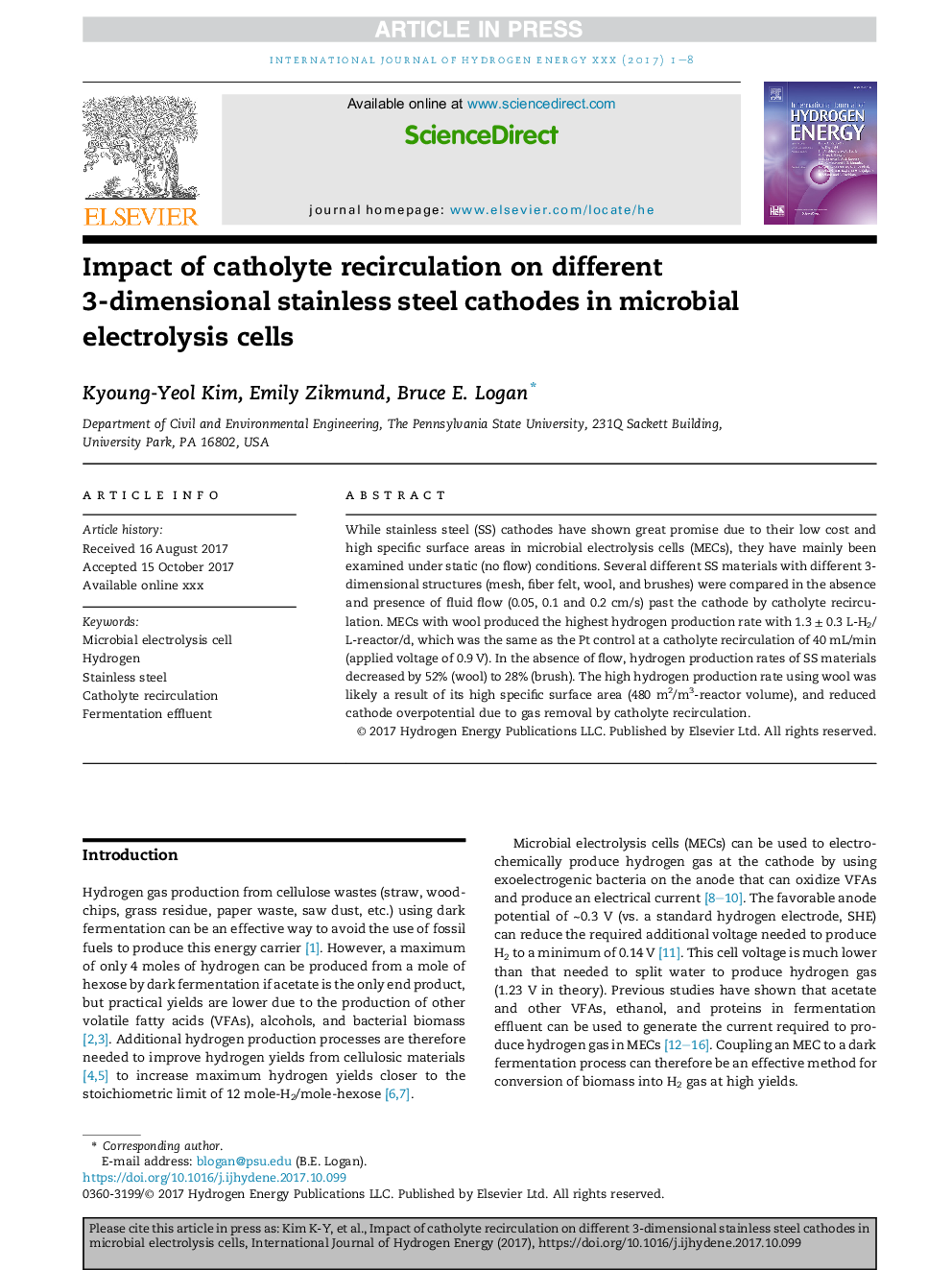| Article ID | Journal | Published Year | Pages | File Type |
|---|---|---|---|---|
| 7709012 | International Journal of Hydrogen Energy | 2017 | 8 Pages |
Abstract
While stainless steel (SS) cathodes have shown great promise due to their low cost and high specific surface areas in microbial electrolysis cells (MECs), they have mainly been examined under static (no flow) conditions. Several different SS materials with different 3-dimensional structures (mesh, fiber felt, wool, and brushes) were compared in the absence and presence of fluid flow (0.05, 0.1 and 0.2 cm/s) past the cathode by catholyte recirculation. MECs with wool produced the highest hydrogen production rate with 1.3 ± 0.3 L-H2/L-reactor/d, which was the same as the Pt control at a catholyte recirculation of 40 mL/min (applied voltage of 0.9 V). In the absence of flow, hydrogen production rates of SS materials decreased by 52% (wool) to 28% (brush). The high hydrogen production rate using wool was likely a result of its high specific surface area (480 m2/m3-reactor volume), and reduced cathode overpotential due to gas removal by catholyte recirculation.
Related Topics
Physical Sciences and Engineering
Chemistry
Electrochemistry
Authors
Kyoung-Yeol Kim, Emily Zikmund, Bruce E. Logan,
